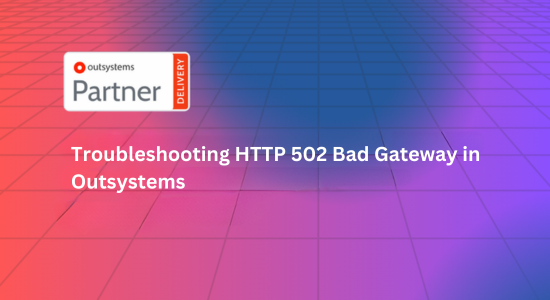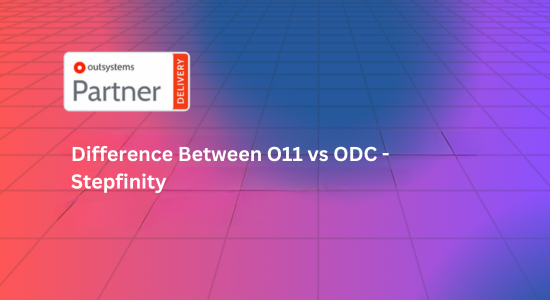In today’s fast-paced digital world, businesses are under constant pressure to innovate quickly while keeping costs under control. Application development is at the heart of digital transformation, but traditional methods can be slow, expensive, and complex. This is where low-code platforms like OutSystems come into play, offering a cost-efficient solution for developing robust applications with faster turnaround times. In this blog, we’ll explore how businesses can maximize their Return on Investment (ROI) using OutSystems for app development, delving into key strategies, benefits, and best practices.
Understanding OutSystems and Its Role in ROIWhat is OutSystems?
OutSystems is a leading low-code application development platform that allows developers to create complex, scalable applications with minimal hand-coding. It offers a visual development environment that accelerates the app development process, enabling both technical and non-technical users to collaborate effectively.How OutSystems Contributes to ROIMaximizing ROI in app development means balancing costs with the benefits derived from the applications.
OutSystems contributes to ROI by:
Reducing Development Time: The platform’s drag-and-drop interface and reusable components significantly cut down on development time, leading to faster deployment.
Lowering Maintenance Costs: With built-in governance and automation tools, maintaining and updating apps becomes simpler and more cost-effective.
Enhancing Productivity: By enabling developers to focus on critical tasks rather than repetitive coding, productivity is improved, leading to more value generation.
Scalability and Flexibility: OutSystems allows businesses to scale their applications as needed without significant rework, protecting the initial investment.
Strategies for Cost-Efficient App Development with OutSystems-
1. Leverage Reusable Components OutSystems comes with a vast library of pre-built templates, widgets, and modules. By leveraging these reusable components, you can avoid reinventing the wheel for common functionalities. This not only saves time but also reduces the need for extensive coding expertise, making the development process more cost-effective.Best Practice: Identify components that can be standardized across multiple applications and integrate them into your development workflow. This standardization reduces the time spent on designing new components for every project.
2. Focus on Agile Development out systems is designed to support agile methodologies, which emphasize iterative development, frequent testing, and continuous feedback. This approach helps in identifying issues early in the development cycle, reducing the costs associated with rework and ensuring that the final product aligns closely with business requirements.Best Practice: Implement a robust agile framework within your OutSystems projects, with regular sprints and stakeholder reviews. This ensures that your applications evolve in response to real-time business needs, optimizing resource allocation and ROI.
3. Automate Testing and Deployment automation is a key driver of cost efficiency in app development. OutSystems offers built-in tools for automated testing and continuous integration/continuous deployment (CI/CD). These tools help streamline the testing process and reduce manual errors, leading to faster and more reliable deployments.Best Practice: Set up automated test scripts and CI/CD pipelines early in the project. This will allow your team to quickly identify and fix bugs, reducing the overall cost and time spent on testing and deployment.
4. Optimize Resource Allocation outsystems provides powerful analytics tools that allow you to track and optimize resource usage throughout the development process. By monitoring resource allocation, you can identify inefficiencies and adjust your strategy to ensure that time and budget are spent effectively.
Best Practice: Use OutSystems’ analytics to track development progress and resource usage in real-time. Adjust your resource allocation based on data-driven insights to avoid overruns and maximize ROI.
Benefits of Using OutSystems for App Development–
1. Speed to Market one of the most significant advantages of using OutSystems is the speed at which applications can be developed and deployed. With the ability to create applications up to 10 times faster than traditional coding, businesses can quickly respond to market demands and capitalize on new opportunities.
2. Reduced Technical Debt- Technical debt refers to the future cost of maintaining and updating code due to suboptimal development practices. OutSystems minimizes technical debt by enforcing best practices, offering automated refactoring, and simplifying the overall code structure. This reduces the long-term costs associated with maintaining and scaling applications.
3. Enhanced Collaboration out systems fosters collaboration between IT and business teams. The visual development environment allows non-technical stakeholders to participate in the development process, ensuring that the final product meets business requirements and reducing the need for costly rework.
4. Scalability and Future- ProofingApplications built with OutSystems are inherently scalable, allowing businesses to grow their applications alongside their needs without extensive redevelopment. This scalability ensures that the initial investment in app development continues to deliver value over time.
5. Security and Compliance Security is a critical consideration in app development. OutSystems provides enterprise-grade security features, including role-based access controls, encryption, and compliance with industry standards.
These features protect your applications from vulnerabilities and reduce the risk of costly security breaches.
Best Practices for Maximizing ROI with OutSystems-
1. Conduct a Thorough Needs Assessment Before beginning development, conduct a thorough needs assessment to understand the business requirements and objectives. This will help in identifying the most cost-effective approach to application development and ensure that the final product delivers maximum value.
Tip: Engage key stakeholders in this process to align the development objectives with broader business goals.
2. Invest in Training and Upskilling while OutSystems is designed to be user-friendly, investing in training for your development team can significantly enhance productivity and reduce errors. An experienced team can leverage the platform’s full capabilities, leading to more efficient development processes and higher ROI.
Tip: Consider certifications offered by OutSystems to ensure that your team is equipped with the latest skills and best practices.
3. Prioritize High-Impact Features in the initial stages of development, prioritize features that offer the highest business value. This focus ensures that you deliver a Minimum Viable Product (MVP) quickly, allowing you to validate the product in the market and begin generating returns early.
Tip: Use OutSystems’ agile development capabilities to iteratively add features based on user feedback and market needs.
4. Monitor and Optimize Post-Deployment Maximizing ROI doesn’t end with the deployment of an application. Continuous monitoring and optimization are essential to ensure that the application continues to meet user needs and deliver value. OutSystems provides analytics tools to track user engagement, performance, and other key metrics.
Tip: Schedule regular reviews of the application’s performance and make data-driven improvements to enhance user satisfaction and ROI.
Conclusion– OutSystems offers a powerful, cost-efficient platform for app development, allowing businesses to maximize their ROI through faster development cycles, reduced maintenance costs, and enhanced collaboration. By leveraging reusable components, adopting agile methodologies, and focusing on continuous optimization, businesses can streamline their app development process and achieve significant financial returns.Investing in OutSystems and following these best practices can position your organization for long-term success in the digital age. Whether you’re looking to develop a single application or embarking on a larger digital transformation journey, OutSystems provides the tools and flexibility needed to achieve your goals efficiently and cost-effectively.








